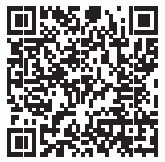Hemidystonia (Sarcoidosis)
OBJECTIVES
To discuss lesion localization in cases of hemidystonia.
To briefly review the major neurological manifestations of sarcoidosis.
VIGNETTE
This 34-year-old man was diagnosed with sarcoidosis through a lymph node biopsy 1 year earlier. He presented to the neurology clinic after rapid onset of abnormal movements of the left arm. Over time, the movements spread to the left side of his neck and face and to a lesser extent his trunk and left leg.
 |
Our patient had biopsy-proven sarcoidosis. He presented with a mixed hyperkinetic movement disorder, hemidystonia and athetosis (also referred to as “slow chorea” or “mobile” dystonia). Most patients with unilateral hyperkinetic disorders have neuroimaging evidence of contralateral basal ganglia lesions. Hemidystonia most often complicates contralateral lesions in the globus pallidus. Hemichoreoathetosis tend to result from contralateral lesions of the anteroventral portion of the caudate, as demonstrated in our patient. Leaning or falling to one side while sitting, standing, or walking may result from contralateral pallidal-putaminal lesions. Our patient had combined lesions in the globus pallidus and caudate, expressing as a combination of dystonia and choreoathetosis.
Stay updated, free articles. Join our Telegram channel

Full access? Get Clinical Tree








